Shanshan Cai
DC-GNet: Deep Mesh Relation Capturing Graph Convolution Network for 3D Human Shape Reconstruction
Aug 27, 2021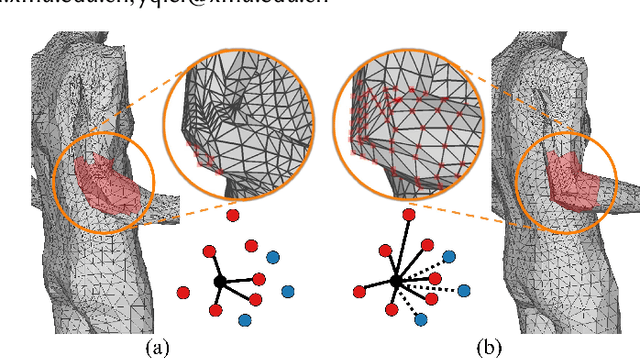
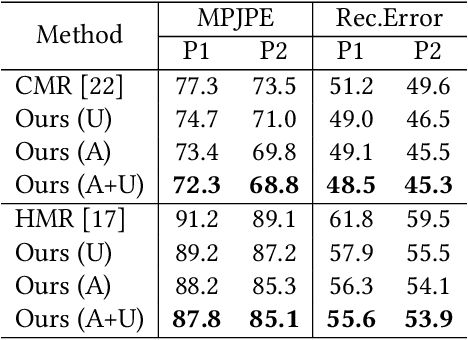

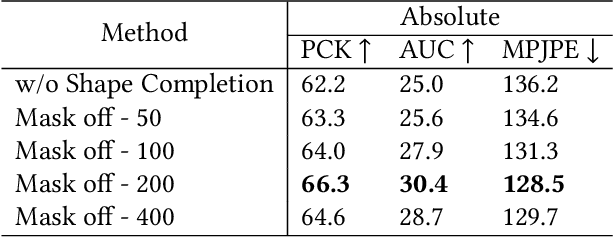
Abstract:In this paper, we aim to reconstruct a full 3D human shape from a single image. Previous vertex-level and parameter regression approaches reconstruct 3D human shape based on a pre-defined adjacency matrix to encode positive relations between nodes. The deep topological relations for the surface of the 3D human body are not carefully exploited. Moreover, the performance of most existing approaches often suffer from domain gap when handling more occlusion cases in real-world scenes. In this work, we propose a Deep Mesh Relation Capturing Graph Convolution Network, DC-GNet, with a shape completion task for 3D human shape reconstruction. Firstly, we propose to capture deep relations within mesh vertices, where an adaptive matrix encoding both positive and negative relations is introduced. Secondly, we propose a shape completion task to learn prior about various kinds of occlusion cases. Our approach encodes mesh structure from more subtle relations between nodes in a more distant region. Furthermore, our shape completion module alleviates the performance degradation issue in the outdoor scene. Extensive experiments on several benchmarks show that our approach outperforms the previous 3D human pose and shape estimation approaches.
A Saak Transform Approach to Efficient, Scalable and Robust Handwritten Digits Recognition
Oct 29, 2017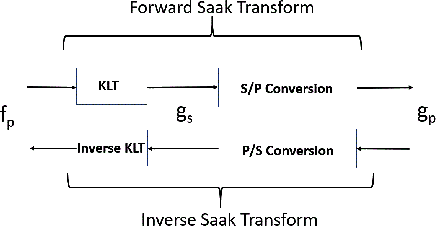
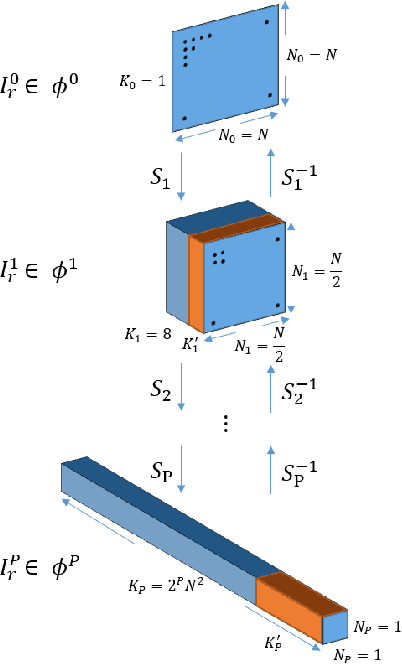

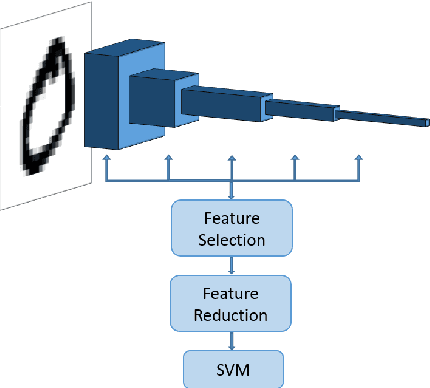
Abstract:An efficient, scalable and robust approach to the handwritten digits recognition problem based on the Saak transform is proposed in this work. First, multi-stage Saak transforms are used to extract a family of joint spatial-spectral representations of input images. Then, the Saak coefficients are used as features and fed into the SVM classifier for the classification task. In order to control the size of Saak coefficients, we adopt a lossy Saak transform that uses the principal component analysis (PCA) to select a smaller set of transform kernels. The handwritten digits recognition problem is well solved by the convolutional neural network (CNN) such as the LeNet-5. We conduct a comparative study on the performance of the LeNet-5 and the Saak-transform-based solutions in terms of scalability and robustness as well as the efficiency of lossless and lossy Saak transforms under a comparable accuracy level.
 Add to Chrome
Add to Chrome Add to Firefox
Add to Firefox Add to Edge
Add to Edge